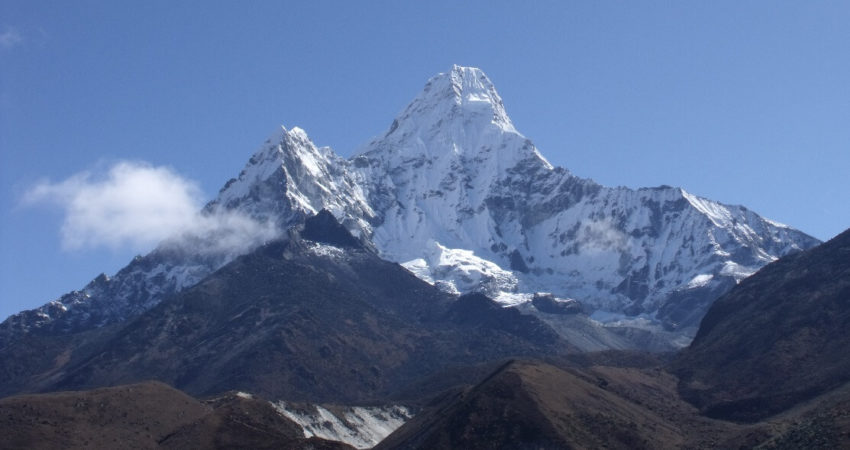Every year there are many trekkers in their 60’s and 70’s that attempt the Everest Base Camp trek. There are also many that are concerned about their fitness, their weight or their abilities. If Everest is your dream, then the team at High Adventure Expeditions wholeheartedly encourage you to pursue it. We share the following advice with you:
- Use a small guiding company that can set you up in a small group, or solo trek. This is quite important because many of the larger trekking companies have schedules to keep. They often have larger groups (I consider 12 or more to be large) and try to keep everyone together. If someone wants to trek a little slower or take an extra day for acclimatization, often this cannot be accommodated, and you are left behind, to be “picked up” as the group descends. Smaller companies and smaller trekking groups tend to have more flexibility. If you’re a solo trekker, you can really set your own pace. It’s very important to ask about this flexibility when you’re identifying your guide/trekking company.
- Solo might sound scary, but its not. Every night on the trek you’ll stay at a Tea House or Lodge. Everybody gathers in the dining room of the lodge and sits around the room reading, journaling, looking at pictures and chatting. You’ll make friends every night and see them on the trek the following days. When you’re trekking its important to go at you’re own pace. Even if you’re part of a group, you’ll often be walking alone and making friends as you wander along.
- Go at your own pace. I just mentioned this, but it’s so important. Some trekkers will charge ahead, proud of the time they took to get to the next village. No one needs to do this. For the sake of acclimatization, if nothing else, you should take your time and go slowly at your pace.
- Try to arrive in Nepal as fit as you can be. Trekking in Nepal is arduous and impactful on the body. Simple things like lack of sleep in a noisy lodge, or insomnia from altitude are very wearing on you. The altitude gets gradually more debilitating and is mentally challenging too. Most often trekkers get some form of upset stomach. This is more complicated to deal with when you’ve primitive bathrooms and limited privacy. All these events (and the cold) make the trek challenging. The fitter you are on arrival, the less you’ll have to worry about the actual trekking, and the more effort you can focus on overcoming these other hardships.
- Hire a porter. Some trekkers carry all their equipment, but this is unnecessary and a burden. One of the keys to trekking success is to make sure you have a porter who carries the bulk of your gear to the next lodge. You carry a small day pack with water, a snack, your camera, and a jacket. Everything else is carried for you. This gives you more strength day after day, provides employment to a local, and an instant friend to you. Most trekking companies can arrange this, just make sure you ask for it.
“you’re only as old as you feel applies to trekking”
Lastly, chronological age is not really a factor in trekking and this is why I didn’t write specifically about age. The saying “you’re only as old as you feel” really does apply to trekking. I’ve seen many older trekkers be successful in reaching Everest Base Camp, and I’ve seen lots of younger trekkers struggle, burn out or quit. If you can walk comfortably on uneven ground for 4 to 6 hours, follow the advice above, and come with a positive mental attitude, you’ll have a wonderful adventure with every chance of reaching Everest.
